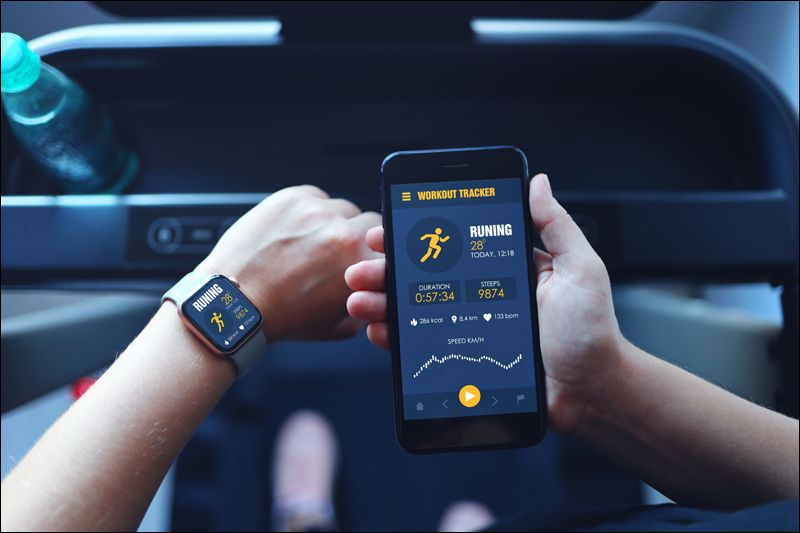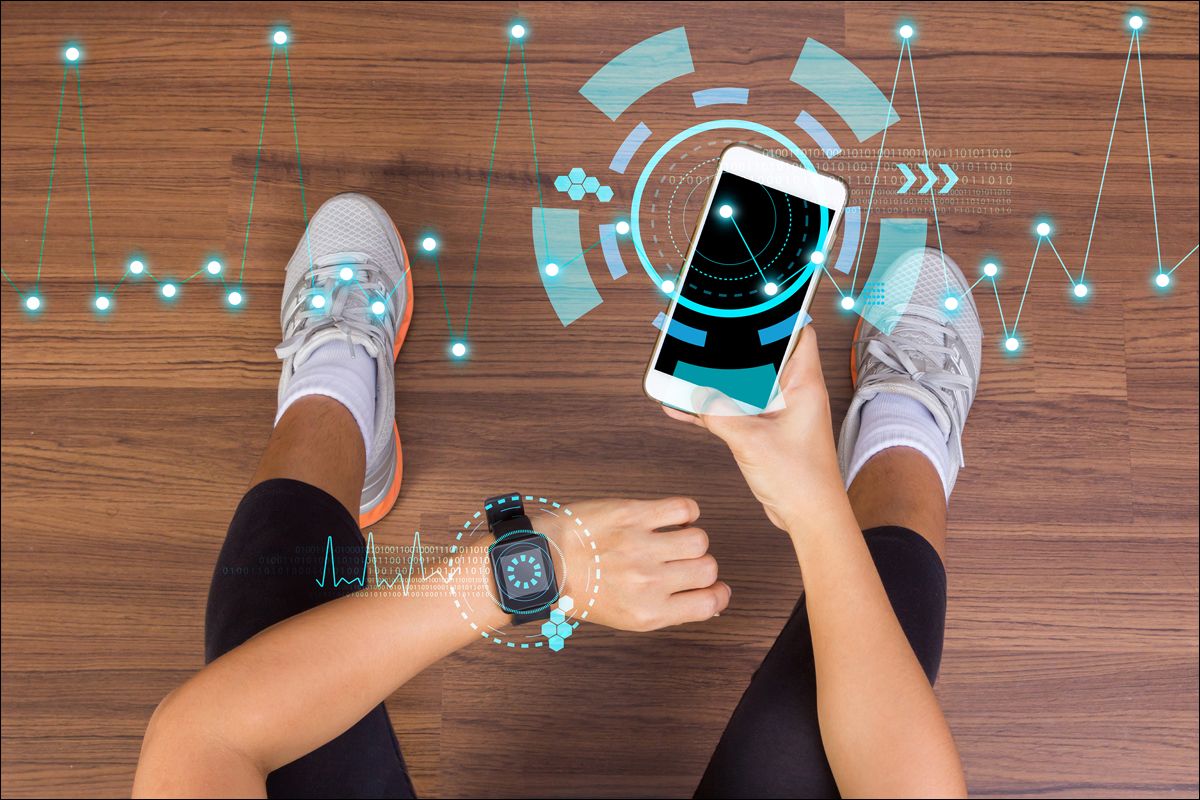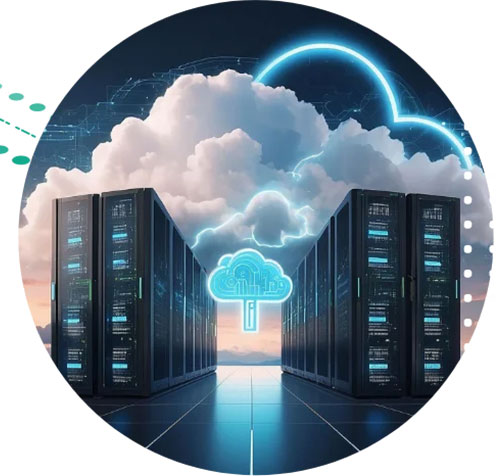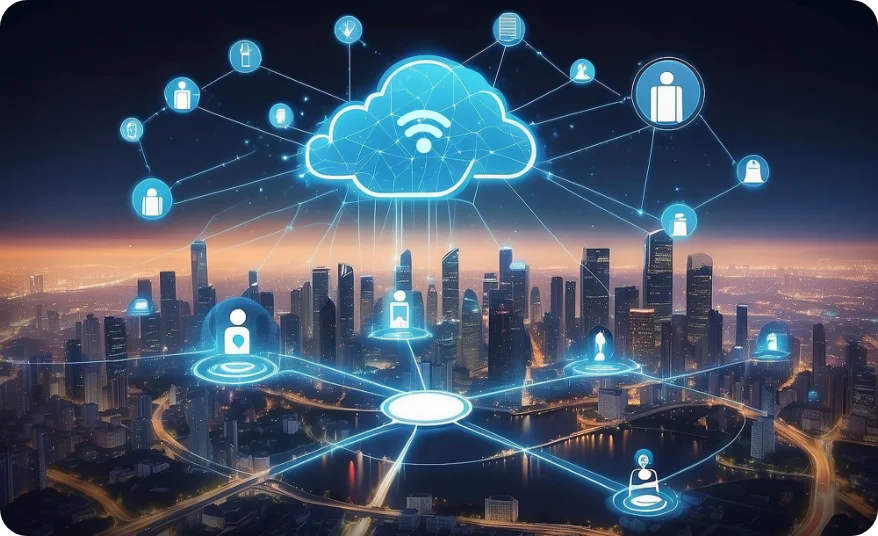The role of data analytics and AI/ML in optimizing data center performance and efficiency
Data centers have emerged as a crucial component of the IT infrastructure of businesses. They handle vast amounts of data generated by various sources, and over the years have transformed into massive and complex entities. Of late, data analytics has emerged as a necessary ally for data center service providers, powered by the growing need to improve parameters like operational efficiency, performance, and sustainability. In this blog, we will discuss the different ways in which data analytics and AI/ML can help enhance data center management and empower data center service providers to deliver better service assurance to end-customers.
How data analytics and AI/ML can help service providers in data center optimization
Today, data center service providers are leveraging data analytics in various ways to optimize data center operations, reduce costs, enhance performance, reliability and sustainability, and improve service quality for customers. They employ a variety of methods to collect data from colocation, on-premise and edge data centers, which include physical RFID/EFC sensors, server, network and storage monitoring tools, security information and event management (SIEM) systems, configuration management databases (CMDBs), API integration, and customer usage data. The data collected is then fed into a centralized monitoring and analytics platform, which uses visualization tools, dashboards, and alert systems to analyze the data and generate insights.
Furthermore, by integrating IoT and AI/ML into data center operations, service providers are gaining deeper insights, automating various processes, and making faster business decisions. One of the most critical requirements today is for analytical tools that can help with predictive assessment and accurate decision-making for desired outcomes. This is achieved by diving deep into factors such as equipment performance, load demand curve, overall system performance, as well as intelligent risk assessment and business continuity planning. Selection of the right tools, firmware, and application layer plays a major role in making such an AI/ML platform successful.
The relationship between analytics and automation from the perspective of data centers is rather symbiotic. Data centers are already automating routine tasks such as data cleaning, data transformation, and data integration, helping data center service providers free up resources for more strategic analytics work, such as predictive modeling, forecasting, and scenario planning. In turn, data analytics provides valuable insights that enable data centers to implement intelligent automation and optimization techniques. This may include workload balancing, dynamic resource allocation, and automated incident response.
Here are some of the key areas where data analytics and automation have a significant impact:
- Enhancing operational reliability: Data analytics, AI/ML and automation can enable data centers to ensure optimal performance. This involves using predictive maintenance, studying equipment lifecycles for maintenance, and incident history analysis to learn from past experiences. In addition, AI/ML-driven vendor performance evaluation and SLA management incorporating MTTR and MTBF further strengthen operations. Leveraging these metrics within the ITIL framework helps data centers gain valuable operational insights and maintain the highest levels of uptime.
- Performance efficiency: Data centers consume a substantial amount of energy to power and maintain desirable operating conditions. To optimize services, track hotspots, prevent hardware failure, and improve overall performance, modern data centers analyze data points such as power usage, temperature, humidity, and airflow related to servers, storage devices, networking equipment, and cooling systems. Prescriptive analytics can take this a step further by providing recommendations to optimize utilization and performance.
- Predictive maintenance: Predictive analytics is a powerful technology that uses data to forecast future performance, identify and analyze risks and mitigate potential issues. By analyzing sensor data and historical trends, data center service providers can anticipate potential hardware failures and perform maintenance before they escalate, with advanced predictive analytics enabling them to improve equipment uptime by up to 20%.
- Capacity planning: Businesses today must be flexible enough to accommodate capacity changes within a matter of hours. Data center service providers also need to understand current usage metrics to plan for future equipment purchases and cater to on-demand requirements. Data analytics helps in optimizing the allocation of resources like storage, compute, and networking while meeting fluctuations in customer needs and improving agility.
- Security and network optimization: Data centers can use analytics to monitor security events and detect vulnerabilities early to enhance their security posture. By analyzing network traffic patterns, data analytics tools help identify unusual activities that may indicate a security threat. They can also monitor network performance, identify bottlenecks, and optimize data routing.
- Customer insights: Data centers collect usage data, such as the number of users, peak usage times, and resource consumption, to better understand customer needs and optimize services accordingly. Analytics helps providers gain insights into customer behavior and needs, enabling them to build targeted solutions that offer better performance and value. For example, through customer-facing report generation, organizations and end-customers can gain valuable insights and optimize their operations. Additionally, analytics accelerates the go-to-market process by providing real-time data visibility, empowering businesses to make informed decisions quickly and stay ahead of the competition.
- Environment sustainability & energy efficiency: Data centers have traditionally consumed significant power, with standalone facilities consuming between 10-25 MW per building capacity. However, modern data center IT parks now boast capacities ranging from 200-400+ MW. This exponential growth has led to adverse environmental impacts, such as increased carbon footprint, depletion of natural resources, and soil erosion. Using AI/ML, performance indicators like CUE (Carbon Utilization Effectiveness), WUE (Water Utilization Effectiveness), and PUE (Power Utilization Effectiveness) are analyzed to assess efficiency and design green strategies, such as adopting renewable energy, implementing zero water discharge plants, achieving carbon neutrality, and using refrigerants with low GHG coefficients. For example, AI/ML modeling can help data centers achieve 8-10% saving on PUE below design PUE – helping to balance environmental impact with an efficiency better than what was originally planned.
- Asset and vendor performance management: The foundation of the AI/ML platform lies in the CMDB, which comprises crucial data, including asset information, parent-child relationships, equipment performance records, maintenance history, lifecycle analysis, performance curves, and end-of-life tracking. These assets are often maintained by OEMs or vendors to ensure reliability and uptime. AI/ML aids in developing availability models that factor in SLA and KPI management. It can provide unmatched visibility into equipment corrections, necessary improvements, and vendor performance. It can also help enhance project models for expansion build-outs and greenfield designs, accurately estimating the cost of POD (point of delivery) design, project construction, and delivery.
- Ordering billing and invoicing: AI/ML plays a vital role in enhancing the efficiency and effectiveness of order, billing, and invoicing processes. Its impact spans various stages, starting from responding to RFPs to reserving space and power, managing capacity, providing early access to ready-for-service solutions, facilitating customer onboarding, and overseeing the entire customer lifecycle. This includes routine processes such as invoicing, revenue collection, order renewal, customer Right of First Refusal (ROFR) management, and exploring expansion options both within and outside the current facility.
Selecting the right data analytics solution
The implementation of data analytics and automation through AI/ML requires careful consideration as several parameters, such as data quality and level of expertise play a crucial role in delivering efficient end-results. To succeed, businesses need to choose user-friendly and intelligent solutions that can integrate well with existing solutions, handle large volumes of data, and evolve as needed.
At Sify – India’s pioneering data center service provider for over 22 years, we continuously innovate, invest in, and integrate new-age technologies like AI/ML in operations to deliver significant and desired outcomes to customers. We are infusing automation led by AI/ML in our state-of-the-art intelligent data centers across India to deliver superior customer experiences, increased efficiency, and informed decision-making, resulting in more self-sustaining and competitive ecosystems. For example, leveraging our AI/ML capabilities has been proven to lead to over 20% improvement in project delivery turnaround time. Our digital data center infrastructure services offer real-time visibility, measurability, predictability, and service support to ensure that our customers experience zero downtime and reduced Capex/Opex.
How do Sify’s AI-enabled data centers impact your business?
- Person-hour savings: Automation of customer billing data and escalations resulting in up to 300 person-hour savings in a month.
- Reduction in failures: Predictive approach for maintenance and daily checks yielding up to 20% reduced MTBF, 10% improved MTTR, and 10% reduction in unplanned/possible downtime.
- Cost savings: Improved power/rack space efficiency and savings on penalties to deliver up to 8% reduction in customer penalties by maintaining SLAs and 10% reduction in operating cost.
- Compliance adherence: Meeting global standards and ensuring operational excellence and business continuity.
To know more about our world-class data centers and how they help enterprises expect positive business outcomes, visit here.
AI and human existence: The ABCs of ADLs
Explained: How even the simplest of day-to-day activities are deeply influenced by ML & AI. Will it become a life-changer?
On any given day, a regular human being does several activities which are performed ritually and without fail. From cleaning to eating and drinking and finding our way across our environments, human life involves many activities that are deemed Activity of Daily Living, or ADL. We have performed these activities in the past without any technological help or advice. Throughout human history, man has invented many a tool to improve the execution of these ADLs, and our current age is no different. Technologies such as ‘Machine Learning’ and ‘Artificial Intelligence’ have enabled many advancements to our lifestyle. Some assist us, however there a few that we need to be cautious about.
Let us stride through these ADLs one by one by following a simple activity timeline of a person’s one-day life as we discover how Machine Learning is shaping human life.
Morning – 5 AM to 10 AM
A day for us typically starts with several activities. Brushing, eating, washing, etc., are a few morning routines that we follow in our day-to-day life.
A day begins by waking up from sleep. Nowadays smart devices such as wrist-fit bands, and smartwatches tell us more about our sleep. These devices take leverage of AI and Machine Learning to provide accurate results with improvement. They help us to improve our sleep quality and behavior which in turn improves our health.

After waking up, we essentially brush our teeth to maintain hygiene and dental wellness. Even in this activity with the help of novel smart wrist devices and smart toothbrushes which use AI and Machine Learning, we study and measure our hand movements, direction, speed, etc., that improve the quality of our brushing which in turns keep our oral health in check. An example of such an application is Oral B Genius X.
Nowadays, washing our hands regularly to maintain hygiene and immunity is very important especially given the COVID scenario around the globe. Many kinds of research have been made to take advantage of the technological development to help in monitoring hand hygiene and give a quality assessment to an individual. Many privatized hospitals have tied up with several industries to implement a smart solution for providing hand hygiene quality assessment. The doctors from these hospitals take advantage of it daily to improve their hygiene and their patients’ as well. An example of such an application is The MedSense Clear system by the MIT Medlab Alumni.
Physical health and maintaining shape have become very underrated due to the new awareness around mental health and its importance. Nevertheless, staying in shape is a very important aspect of people’s lives as it indirectly constitutes mental well-being. Diet planning and eating healthy is something that must be taken care of. With the help of smart mobile and computer applications, we nowadays plan our diet efficiently. With the rise of ‘Machine Learning’, this system is scrutinized, and further research is being conducted to find solutions for problems such as people’s preferences in their eating habits to provide an even better solution.
Mid-Day Activities – 10 AM to 3 PM
Mid-day activities constitute a very wide range of tasks. We regularly use map applications to commute to a certain location. These applications use AI and Machine Learning extensively to provide the best route possible by predicting traffic and other obstacles well before we commute. These applications suggest the best means of transport and the best route to take, they even track and alert us on breakdown of transport services. Examples of such applications are Google Maps, Apple Maps, etc.
Many people work in closed environments either in the office or at home. We are always sedentary, and desk bound. It becomes inevitable to take breaks and go for a short walk and stretch ourselves. And, equally important is to keep ourselves hydrated. With the help of smart devices, we can track the amount of time that we sit continuously. They help us to take a break or even correct our posture if required. Some also help us stay hydrated and suggest improvements based on the environment and atmosphere quality around us. Examples of such devices are Apple Watch, Mi Band, etc.
Evening Activities – 3 PM to 8 PM
Evenings are when we generally try to relax after work and indulge in leisure activities that differs from individual to individual. These activities involve a lot of AI and Machine Learning as it takes advantage of our data right from our preferences to our recent practices. These technology-driven applications and systems need to be handled with utmost caution. We all use the e-commerce facility extensively as it helps us to reduce the time and energy to buy a product as it enables us to shop from wherever we are. This has huge benefits. But we sometimes are ignorant and innocent about the implications that might come. Few applications read our technology usage colossally as they keep track of us more than we know. They improve their recommendation system using this data with the help of AI and Machine Learning and suggest products well before we want to search. If we are not using an official or a recognized application, we are at risk of a privacy breach with the history of our shopping data being stolen or hacked.

Social media applications have invaded our lives. We connect via different platforms to share, exchange ideas and also to relax. However, some of these applications hold sensitive data about us. These applications have plenty of recommendation systems that are constantly updated to feed posts enjoyable to us. But are we compromising on the sensitive data like our name, address, phone number, etc., as well as our preferences that reveal who we are while doing so? An imminent danger to watch out for here is ‘data leakage’. Some of these applications never encode or cipher our passwords. Other activities during the evening include working out, which a few people prefer in the morning too. With the prevailing COVID situation, we have restricted using the gym frequently. Many applications and systems have been created to assist us to work from home. With the help of AI and Machine Learning, they streamline our workout routine.
End Day Activities – 8 PM to 5 AM
End-day activities help us unwind as we call it a day. We perform certain activities as mentioned previously like eating, brushing, washing, etc. Some smart devices assist us by providing an alarm to indicate our sleeping time. This heavily depends upon technology as it tracks our previous sleep history to let us know in what areas we need to improve. These applications help us learn from our sleep pattern, like how much time we spent in deep sleep and so on. This system heavily uses AI and other sensors to read our breathing, heartbeat and measures those accurately to provide insights. Many wristwatches and fit bands provide this feature.
As we get to the end of it, these applications help us save energy and time as well as lead an enriching life.Having said that, we must also be cautious regarding their influence on us. Take precautions and double-check the application for privacy policies. Always use trusted applications, instead of randomly selecting one that might store unwanted cookies to store sensitive data which might lead to an imminent threat. So, what’s your ADL?
In case you missed:





























































